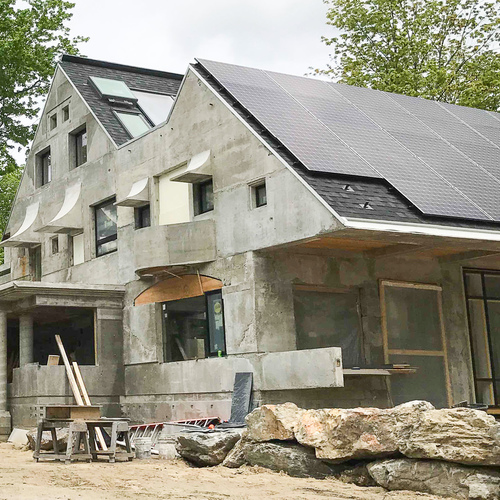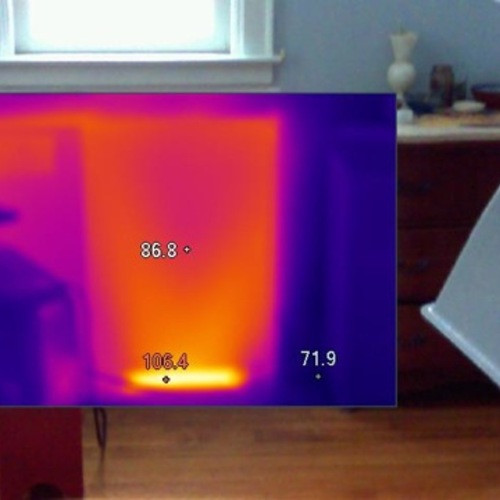
I’ve been writing about residential energy-efficiency measures for more than 25 years, ever since I was hired as an assistant editor at the Journal of Light Construction in 1999. Recently I wondered, “What’s changed during those 25 years?” The answer, as it turns out, is “a lot.”
My conclusion contradicts a recurrent theme in newspaper stories on U.S. residential construction—namely, that our industry is stuck in the mud, still building houses the old-fashioned way. (A recent example of this theme was published by the New York Times: “Why Do We Build Houses in the Same Way That We Did 125 Years Ago?”) The authors of these articles often point out, accurately, that most U.S. homes aren’t delivered by truck from a factory; instead, they are mostly site-built out of framing lumber, much as they were in 1960.
But if you are one of a subset of builders or homeowners who cares about energy efficiency and environmental responsibility, you’ll find that the specifications for a home in 2024 are much different than they were in 1999.
Some things have stayed the same
Some specifications for energy-efficient construction haven’t changed much. For example, back in 1999, many New England builders were building extra-thick walls to accommodate more insulation; installing a thick layer of cellulose insulation on attic floors; choosing among various brands of triple-glazed windows; getting ready for a blower door test by performing air-sealing work; and specifying the installation of a heat-recovery ventilator. For energy-conscious builders in cold climates, these details remain common today.
However, many residential specifications that are now routine didn’t exist back in 1999.
A glance back at America’s first zero-energy house
Since zero-energy homes are now quite common, it’s easy to forget that the first zero-energy home in the U.S.—that is, the first house to demonstrate…
Weekly Newsletter
Get building science and energy efficiency advice, plus special offers, in your inbox.

This article is only available to GBA Prime Members
Sign up for a free trial and get instant access to this article as well as GBA’s complete library of premium articles and construction details.
Start Free TrialAlready a member? Log in















3 Comments
Martin,
An interesting and pleasantly optimistic article.
I look at the elements of wood frame construction that haven't fundamentally changed as not so much reflecting inertia, as perhaps more reflecting that they were thought through quite well early on. Much in the same way that the basic bicycle design today closely resembles those of a century ago.
Most of the innovations you cite are equipment that can be incorporated into any good building shell. Like you I'm hopeful that the rate of technical improvement will continue, but yes, we are already in a good place, and don't need to wait for solutions the way some other seemingly intractable problems we face as a species may need to.
I started reading this website maybe about a decade ago knowing that one day, when I retired from the military, I would be settling in one place and ideally building my own home (well, not with my own hands, but you know). As I am now 2 years from desired move in, we are starting the design phase and I have signed up for GBA prime to make sure I have the latest info on how to best set up the home.
This is an interesting retrospective as I took up construction about 25 years ago.
A couple of other things that have been changing a lot for me in that time frame:
- Information access. Circa 2000, most of the useful information was still on paper and not as readily available. Buying books and cutting pages of Fine Home Building or Home Power magazine was a ritual.
- Airflow! Although it was already well appreciated in the circle of experts, in the mainstream where I was, aiming for an airtight envelope -and between units in multifamily- was not considered as high a priority as stuffing more insulation. As long as there were no visible holes, things were considered adequate and blower door tests were considered an afterthought.
Digression: I follow the world of road bike racing and there has been a similar trend regarding the study and application of aerodynamics. Up to the early 2000s, most of the focus was on getting to the lightest weight and stiffest frames possible. Then a more scientific approach showed that when attempting to bike fast, it’s all about overcoming air resistance. Nowadays all the fancy road-racing bikes are highly optimized for airflow and some of them have actually gone a pound or two heavier than comparable models of 10 years ago -see link below. Professional racers are wearing aero optimized outfits, and to save a Watt or two at high speed, even socks have to be aero these days! And just like buildings, high-end road racing bikes have become increasingly expensive to build and complicated to maintain as a result.
https://youtu.be/iXr4vvtgfZU?t=129
Log in or become a member to post a comment.
Sign up Log in